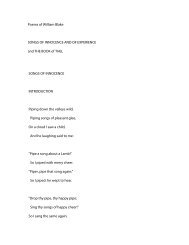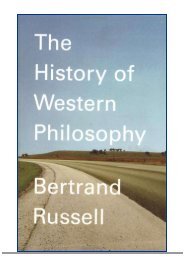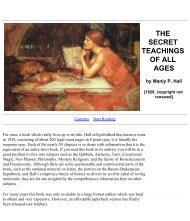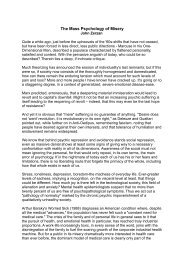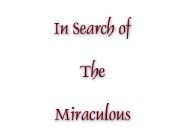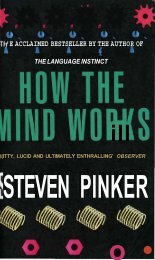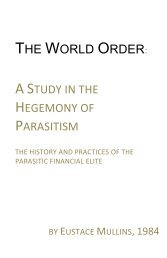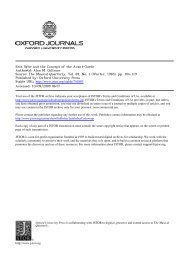the truly unrepresentable become evident; its structures renderedtransparent, time becomes visible in its proper and most unique medium,the human body (or the head).This type of temporic portrait does not represent merely a willful orfortuitous playfulness of Picasso's style, but rather reflects his specificneed to express and shape the uncontainable emergence of concretetime. This is evident from his early incomplete solutions, as well as fromsimilar portraits by Braque done independently during the same period.Two of Picasso's paintings,Harlequin with a Guitar of 1918and 1924, aswell as his two major works of 1925, La cage d'oiseau, and Nature morteàla tête de plâtre, further manifest his search for concrete time. Picassohimself underscored the importance of these two works by selecting themto appear among the reproductions of nineteen works printed in Sabartés'collection of 1935. In addition we refer the reader to two portraits of1927,Buste de femme en Rouge and Femme, as well as to the Femmeaubonnet rouge of 1932.With reference to Braque, who by 1939was at work on his Greek heritage,we can discern distinct early indications of a temporic treatment in hisportraits such as the Woman's Head of 1930and Sao of 1931.<strong>The</strong>re isevidence of his preoccupation and increasing mastery of this temporictreatment after 1936.<strong>The</strong> works cited here embody the full creative force of the two mostpowerful painters of our era, and even our brief discussion should suggestthe extent to which the concretion of time, and the attempts to formulateit, dominate contemporary forms of expression. <strong>The</strong> emergenttransparency of the time characteristic of the portraits can also beobserved in the landscape painting of Picasso mentioned above. Sincethere is, so far as we know, only a single and virtually inaccessiblereproduction of this work, we shall venture a description.I visited Picasso after his return from Britanny to Paris in the autumn of1938at his studio, located at that time in the Latin Quarter, where he haddone his Guernica the work that almost abolished spatiality. As I recall, heshowed me on this occasion the new oils he had completed during thesummer of that year. I was especially attracted to one small picturerepresenting a landscape of village roofs as seen from a window; thepainting was nearly devoid of depth and any central point of illumination.<strong>The</strong> entire picture showed nothing but layers of almost flat, multifariouslycolored roofs suggesting at first glance a mere aggregation of rectangularplanes. I felt attracted to it at first, or so I thought, by its abundance ofcolor, until the true reason for my interest finally emerged: its lack of anyspatial localization of time. Instead of presenting a temporal moment, thepicture renders an enduring, indeed eternal present. <strong>The</strong> shadows thatappear among the gradations of hue were not the result of the specificspatial-temporal position of the sun, as in the landscapes of Watteau orPoussin, where one can ascertain the specific park, the particular year,30
month, indeed the specific day, the very hour, and, from the outline of theshadows, the very second, the exact temporal moment in space.In Picasso's roof the dislocation and layered arrangement of the shadowsmirror the natural movement of time; he has rendered the landscape byaudaciously incorporating all of the changes of illumination (visible in theshifts of shadow and shading), the temporal motions brought on by thealtered positions of the sun during the time when he was painting. Thiscapturing of the present as it affects nature could not have been bolder,precisely because of its simplicity. What is here visible in this uniquepainting is not the spatializing temporal moment. It is the presentemerging in its transparent entirety - the present corresponding in itsindispensable accidentals to our notion of eternity; for neither can beconceptualized or imagined. In Picasso's paintings both the present andthe eternity are rendered transparent and thus ever-present, evident, andconcrete.Aperspectivity, through which it is possible to grasp and express the newemerging consciousness structure, cannot be perceived in all itsconsequences – be they positive or negative unless certain still validconcepts, attitudes, and forms of thought are more closely scrutinized andclarified. Otherwise we commit the error of expressing the "new" with oldand inadequate means of statement. We will, for example, have to furnishevidence that the concretion of time is not only occurring in the previouslycited examples from painting, but in the natural sciences and in literature,poetry, music, sculpture, and various other areas. And this we can do onlyafter we have worked out the new forms and modes necessary for anunderstanding of aperspectivity.<strong>The</strong> very amalgamation of time and the psyche noted earlier, with itsunanticipated chaotic effect as manifested by surrealism and later bytachism, clearly demonstrate that we can show the arational nature of theaperspectival world only if we take particular precautions to preventaperspectivity from being understood as a mere regression to irrationality(or to an unperspectival world), or as a further progression towardrationality (toward a perspectival world). Man's inertia and desire forcontinuity always lead him to categorize the new or novel along familiarlines, or merely as curious variants of the familiar. <strong>The</strong> labels of thevenerated "Isms" lie ever at hand ready to be attached to new victims. Wemust avoid this new idolatry, and the task is more difficult than it firstappears.Let us again look at our example of the fusion of time and the psyche: aslong as time is dredged up from oblivion and thrust into visibility in bitsand pieces, our preoccupation with the past aspect of time will bring onfurther chaos and disintegration. But the moment we are successful, likePicasso, in wresting past "time" − that is latently present time - fromoblivion via its appropriate structure and means of expression, and renderit visibly anew and thus present, then the importance we accord to theearlier times and their diverse structures of consciousness will become31
- Page 5 and 6: deficient forms which have become a
- Page 7 and 8: they could not reach their intent w
- Page 9 and 10: identity, or with his being equated
- Page 11 and 12: was especially influential on Greek
- Page 13 and 14: anticipated by Pope Sabinus, who in
- Page 16 and 17: discovery of Augustine's words. "I
- Page 18 and 19: concretion of space, our epoch is c
- Page 20 and 21: While plumbing the hidden depths of
- Page 22 and 23: With Leonardo the perspectival mean
- Page 24 and 25: perspective, had become common prop
- Page 26 and 27: not an avenue. Although man's horiz
- Page 28 and 29: order to obtain a sequential view o
- Page 32 and 33: apparent in the development of aper
- Page 34 and 35: characteristics of the structures,
- Page 36 and 37: Structureaugmentation, a loss or a
- Page 38 and 39: "silenced music" of which St. John
- Page 40 and 41: meantime the integral perception an
- Page 42 and 43: homogeneity of the viscera, as well
- Page 44 and 45: Archaic — OriginaryMagicempathy a
- Page 46 and 47: IntegralCreed)Method(Divinity)(Eteo
- Page 48 and 49: that structure itself. Orestes' act
- Page 50 and 51: in its silent meaning, for he dedic
- Page 52 and 53: directed way, and to a mythical dem
- Page 54 and 55: Even though we may be unable to do
- Page 56 and 57: of arational possibilities which ar
- Page 58 and 59: chapters 5, 6, and 7, we would like
- Page 60 and 61: presupposes in any event the mental
- Page 62 and 63: capability is being formed in him w
- Page 64 and 65: At the moment when consciousness be
- Page 66 and 67: temporal aspects enumerated. We are
- Page 68 and 69: understanding the phenomenon of tim
- Page 70 and 71: temporal forms which co-constitute
- Page 72 and 73: crystallizing in a new perception o
- Page 74 and 75: dream-like and somnolent aspects an
- Page 76 and 77: ealization now manifesting itself a



